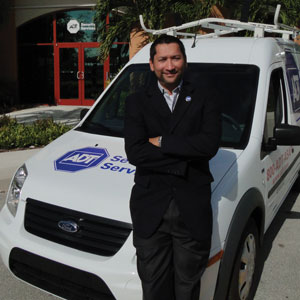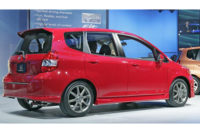
|
For David Wade, group director for supply chain at ADT Security Services, Boca Raton, Fla., one turning point in managing his 7,000 vehicles and their costs was transforming a transactional relationship with his fleet management company into “a more collaborative, strategic relationship based on a multi-year horizon.”
Then there is Bob Stoffel, who, until he retired, was a logistics “big daddy” over a work fleet of more than 94,000 ground vehicles. He instituted a now iconic strategy at UPS to save gas money: turn right, not left, at intersections, no matter which way you are heading. It turns out, pun intended, that idling motors are the devil’s tool impacting mileage and productivity when left-leaning driver and truck must wait for a light to change or oncoming traffic to pass.
Driving these folks and others in the security industry is, obviously, the rising cost of motor fuel. It’s a challenge facing Americans and the global economy as well as a debating point during this year’s presidential elections.
A Gallup poll last month, for instance, found a vast majority of Americans (85 percent) say President Obama and Congress should take “immediate” action to keep a lid on prices. While that seems highly unrealistic and ineffective for such a complex problem, security firms are taking actions to better manage their energy costs, especially when it comes to company cars and trucks.
Focusing on driver behavior, vehicle choices, maintenance and tracking technologies are really a secondary focus of security businesses, points out Tom Raftery, vice president of Corporate Services and Purchasing for Protection 1, Romeoville, Ill. The primary focus: clients and potential clients and the sale, services and monitoring of security, life safety, automation and integration products, systems and installation.
But alleviating those gas pains can bring more money to the bottom line; efficiencies can increase customer satisfaction; measures can improve safety; and, as a spillover, they can spotlight a certain degree of “greenness” of the business itself.
Wade has seen a relationship with GE Capital Fleet Services, his fleet management service, go beyond, way beyond, financing. It’s evolved into a partnership and knowledge-based collaboration.
Historically and engrained in tradition, ADT’s fleet consisted of full-size service vans. GE Capital of Eden Prairie, Minn., gathered a team of strategic consultants and fleet management experts to help ADT find new savings. The outcome: More than half of the fleet now consists of Ford Transit Connects. On a complementary track, GE Capital also helped ADT conduct a study of its information and communications technologies, which led to a high-tech GPS and telematics vehicle solution.
It is estimated that deployment of the new, more efficient vehicles will help ADT save more than $6 million a year in operating costs. It has also reduced CO2 emissions by 40 percent and telematics should create a further estimated savings of more than $3 million annually.
Optimization is the thing for Scott Taylor, director of field services for Vivint of Provo, Utah, who manages about 720 various vehicles in the fleet. In addition to assistance from Enterprise Fleet Management and its analysis tools, Vivint worked with ClickSoftware Technologies of Burlington, Mass., and deployed by Diabsolut of Quebec, Canada, for a scheduling and mobile solution that was integrated with other customer relationship management or CRM components and could function on mobile devices used by field technicians.
What Raftery, Wade and others are doing, to one degree or another, or considering to do, falls into a number of gas-saving strategies. And security companies no matter their size can embrace them, too. They include:
• Types of vehicles, the ways to purchase, management, maintenance and payload accommodation.
• How, when and where fuel is purchased. One tip: Buy gas on Wednesday or early Thursday. Gas station owners often post price increases Thursday at 10 a.m. or a little later for weekend payoff.
• Driver behavior and its enforcement by management and technology.
• Technology that can range from onboard computing and telematics to sophisticated GPS-based fleet tracking and management solutions.
• And, as a stop gap, fuel surcharges or increased mileage charges on certain types of service calls.
Dan Budinoff, president, Security Specialists in Stamford, Conn., employs “a whole bunch” of efficiency and safety solutions. He currently has, for example, a fuel surcharge of $5 per service call, although it is hopefully a short-term measure.
In addition to bringing in Transit Connects for service techs, Budinoff equipped sales staffers with Honda Fits, a unique-looking vehicle but, according to Budinoff, the Fits fit in, thanks to their 30-mile-per-gallon-or-so attraction. Another one is his WrightExpress (South Portland, Maine) fleet charge and fuel cards. Unlike oil company-specific cards, WrightExpress cards, according to Budinoff, are honored by most gas stations, “including the off brands,” and make it easier for drivers to more quickly shop around for a best buy.
Active maintenance programs also pay dividends. Changing the oil at appropriate intervals and accurate tire pressure are just two elements, but important ones. “Proper tire pressure can save 90 to 100 gallons per vehicle per year,” Raftery said.
Among most security firms, there continues to be a downsizing of vehicles, although preferences vary.
“In the past, about 40 percent of our fleet was full vans. We are now down to 10 percent,” adds Bradford Caron, president, Signet Electronic Systems of Norwell, Mass. “We are also getting rid of vehicles earlier. Older vehicles need servicing and maintenance more often and get lower miles per gallon as compared to newer vehicles.”



